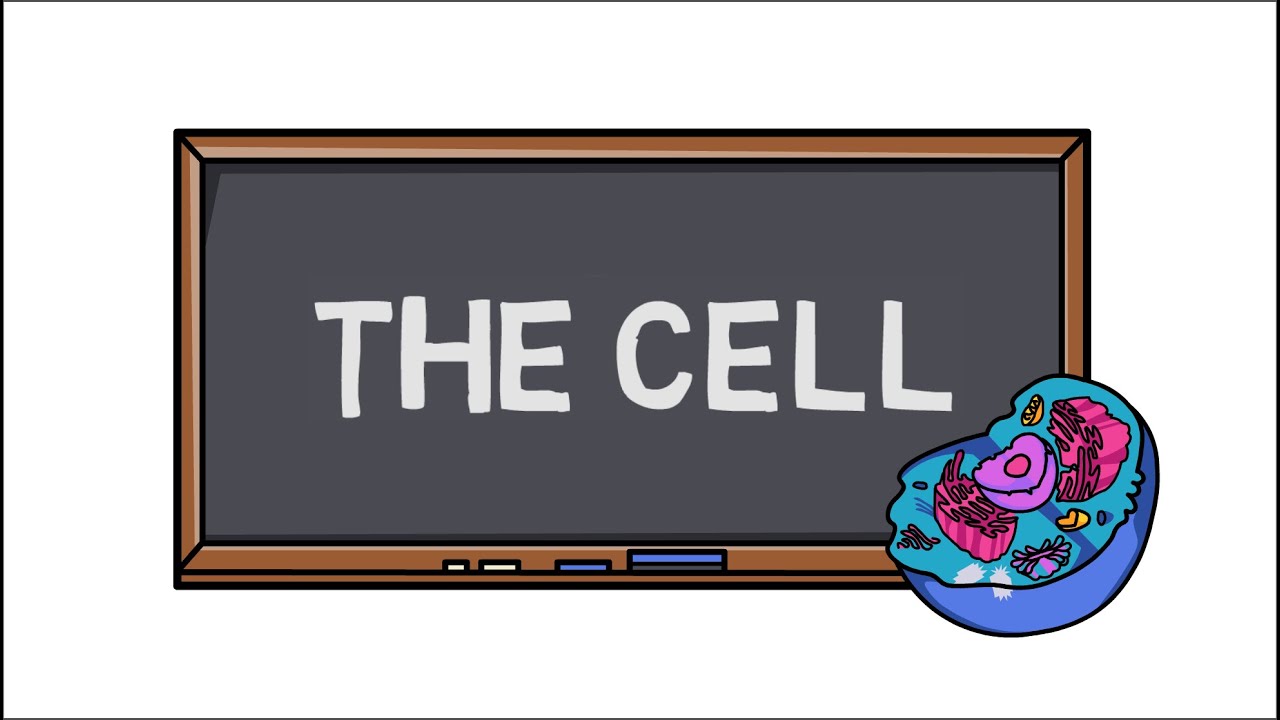Cell - Biology for class -8
Summary
TLDRThe video script discusses cell structure, highlighting cells as the building blocks of the body. It differentiates between plant and animal cells, noting the presence of vacuoles and chloroplasts in plant cells. The script also covers essential cell components like the nucleus, mitochondria, ribosomes, and cytosol, emphasizing their roles in cellular functions and division.
Takeaways
- 😀 The speaker introduces themselves as Shota Lal, studying Biology in Class 10th.
- 🏡 They belong to Lucknow and explain the structure of a cell in a video.
- 🌟 Cells are described as the structural and functional units of the body, often referred to as the building blocks of life.
- 🏗️ The comparison of cells to bricks in a house is made, but clarified that cells are living entities unlike non-living bricks.
- 🌱 Inside cells, all activities of the body occur, highlighting their importance in biological processes.
- 🌳 The distinction between plant and animal cells is made, noting differences in their structure and function.
- 🌿 Plant cells have a cell wall and vacuoles, which are absent in animal cells.
- 🐾 Animal cells have a semi-permeable membrane that allows selective movement of molecules, unlike plant cells.
- 🧬 The nucleus is identified as the control unit of the cell, crucial for cell division and protein synthesis.
- 🔋 Mitochondria are described as the powerhouse of the cell, providing energy through respiration.
- 🌡 Ribosomes are highlighted as the site of protein synthesis, essential for the production of amino acids.
Q & A
What is the main topic of the video?
-The main topic of the video is the structure and function of cells, including a comparison between plant and animal cells.
What is the basic definition of a cell mentioned in the video?
-A cell is described as the structural and functional unit of the body, often referred to as the building block of life.
How are cells compared to building blocks in the video?
-Cells are compared to building blocks in the sense that they form the structure of living organisms, unlike non-living building materials such as bricks and stones.
What distinguishes plant cells from animal cells according to the video?
-Plant cells have a large vacuole and a cell wall, which are not present in animal cells. Plant cells also contain chloroplasts for photosynthesis.
Why do plant cells have large vacuoles?
-Plant cells have large vacuoles to store water, which is essential because plants need a constant supply of water and cannot move to acquire it.
What is the function of the cell wall in plant cells?
-The cell wall in plant cells provides structure and support and is permeable, allowing the movement of water and molecules.
What is the role of the cell membrane mentioned in the video?
-The cell membrane, present in both plant and animal cells, is semi-permeable and controls the movement of select molecules in and out of the cell.
What is the nucleus referred to as in the video, and why?
-The nucleus is referred to as the control house of the cell because it regulates cell activities, including growth and reproduction.
What is the function of mitochondria as described in the video?
-Mitochondria are described as the powerhouses of the cell, responsible for respiration and providing energy.
How does the video describe ribosomes and their function?
-Ribosomes are involved in protein synthesis, playing a crucial role in producing proteins and amino acids necessary for the cell.
What is the role of the cytoplasm according to the video?
-The cytoplasm is a gel-like fluid where cell organelles float, creating a framework for the cell and containing food materials and fat droplets.
What is the importance of chloroplasts in plant cells as mentioned in the video?
-Chloroplasts are referred to as the kitchen of the plant cell because they are the site of photosynthesis, converting solar energy into chemical energy to produce food.
Outlines

此内容仅限付费用户访问。 请升级后访问。
立即升级Mindmap

此内容仅限付费用户访问。 请升级后访问。
立即升级Keywords

此内容仅限付费用户访问。 请升级后访问。
立即升级Highlights

此内容仅限付费用户访问。 请升级后访问。
立即升级Transcripts

此内容仅限付费用户访问。 请升级后访问。
立即升级浏览更多相关视频

Introduction to Anatomy and Physiology

Cells for Kids | Learn about cell structure and function in this engaging and fun intro to cells

Nervenzelle einfach erklärt: Aufbau & Funktion

Cells Cells - Parts of the Cell Rap

The Cell | Discovery of first Cell | Cell Theory |

Anatomi Fisiologi Dasar : Sel dan Jaringan
5.0 / 5 (0 votes)
